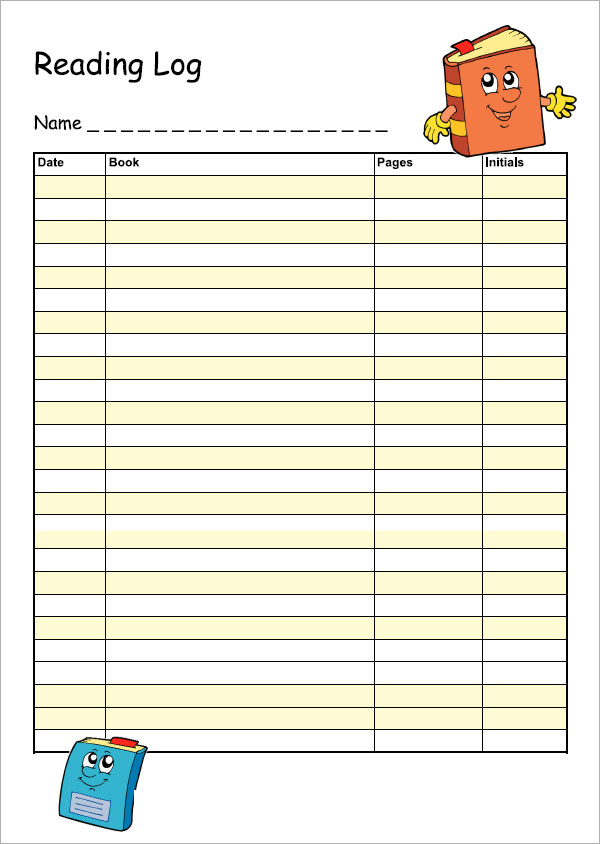Welcome to the incredible world of reading. We understand that reading is a fundamental aspect of learning. This is why we are proud to offer you a detailed guide on how to keep track of your reading progress using reading logs.
What is a reading log?
A reading log is a tool used to keep track of a reader’s progress and record the books or materials they have read. It is an excellent way to chart a reader’s progress over time, track the types of books or materials they prefer, and monitor their reading habits.
 Reading logs come in many shapes and sizes. From printable templates to digital forms, there is a reading log option for everyone. Reading logs are perfect for children who are just starting to read as well as adults who are passionate readers.
Reading logs come in many shapes and sizes. From printable templates to digital forms, there is a reading log option for everyone. Reading logs are perfect for children who are just starting to read as well as adults who are passionate readers.
Why Use a Reading Log?
Reading logs can be useful in many different ways. Here are some of the benefits of keeping a reading log:
- Track Reading Progress: Reading logs allow readers to monitor their reading progress over time. By tracking the books or materials they have read, readers can see how far they have come and set goals for the future.
- Discover New Books: Keeping a reading log can help readers discover new books or materials they might not have otherwise considered.
- Remember Books: A reading log can help readers keep track of the books they have read over the years and remember important details about each one.
- Improve Reading Habits: A reading log can help readers improve their reading habits by setting goals, tracking progress, and staying accountable.
How to Create a Reading Log
Creating a reading log can be a fun and rewarding activity. Here are some steps to follow to create your own reading log:
Step 1: Choose a Format
The first step in creating a reading log is to choose a format. You can choose from a variety of options, including printable templates, digital forms, or even a notebook.
Step 2: Choose Categories
The categories you choose for your reading log will depend on your personal preference. Categories might include the book title, author, date of completion, genre, and rating.
Step 3: Determine Your Goal
Determining your goal for your reading log can help you stay motivated and on track. Your goal might be to read a certain number of books in a year, read books from a specific genre, or read books from a certain author.
Step 4: Get Started!
Once you have chosen your format, categories, and goal, it’s time to get started! Make sure to update your reading log regularly and stay committed to your goal.
Sample Reading Logs
There are many free reading log templates available online. Here is a sample of some of the best templates:
1. Simple Reading Log Template
 This simple reading log template is perfect for keeping track of basic information about each book you read, including the title, author, and date completed.
This simple reading log template is perfect for keeping track of basic information about each book you read, including the title, author, and date completed.
2. Weekly Reading Log Template
 This weekly reading log template is perfect for those who want to track their reading progress on a weekly basis. The template includes spaces for the book title, author, and minutes read each day.
This weekly reading log template is perfect for those who want to track their reading progress on a weekly basis. The template includes spaces for the book title, author, and minutes read each day.
3. Book Review Reading Log Template
 This book review reading log template is perfect for readers who want to record more detailed information about each book they read. The template includes space for a brief book review, the book’s genre, and the reader’s rating.
This book review reading log template is perfect for readers who want to record more detailed information about each book they read. The template includes space for a brief book review, the book’s genre, and the reader’s rating.
Conclusion
In conclusion, reading is an essential part of learning, and a reading log is an excellent tool to help readers keep track of their progress. By choosing a format, categories, and goal, and regularly updating your reading log, you can stay motivated, discover new books, and remember important details about each book you read.
 So go ahead and create your own reading log today, and enjoy the benefits of reading for years to come.
So go ahead and create your own reading log today, and enjoy the benefits of reading for years to come.